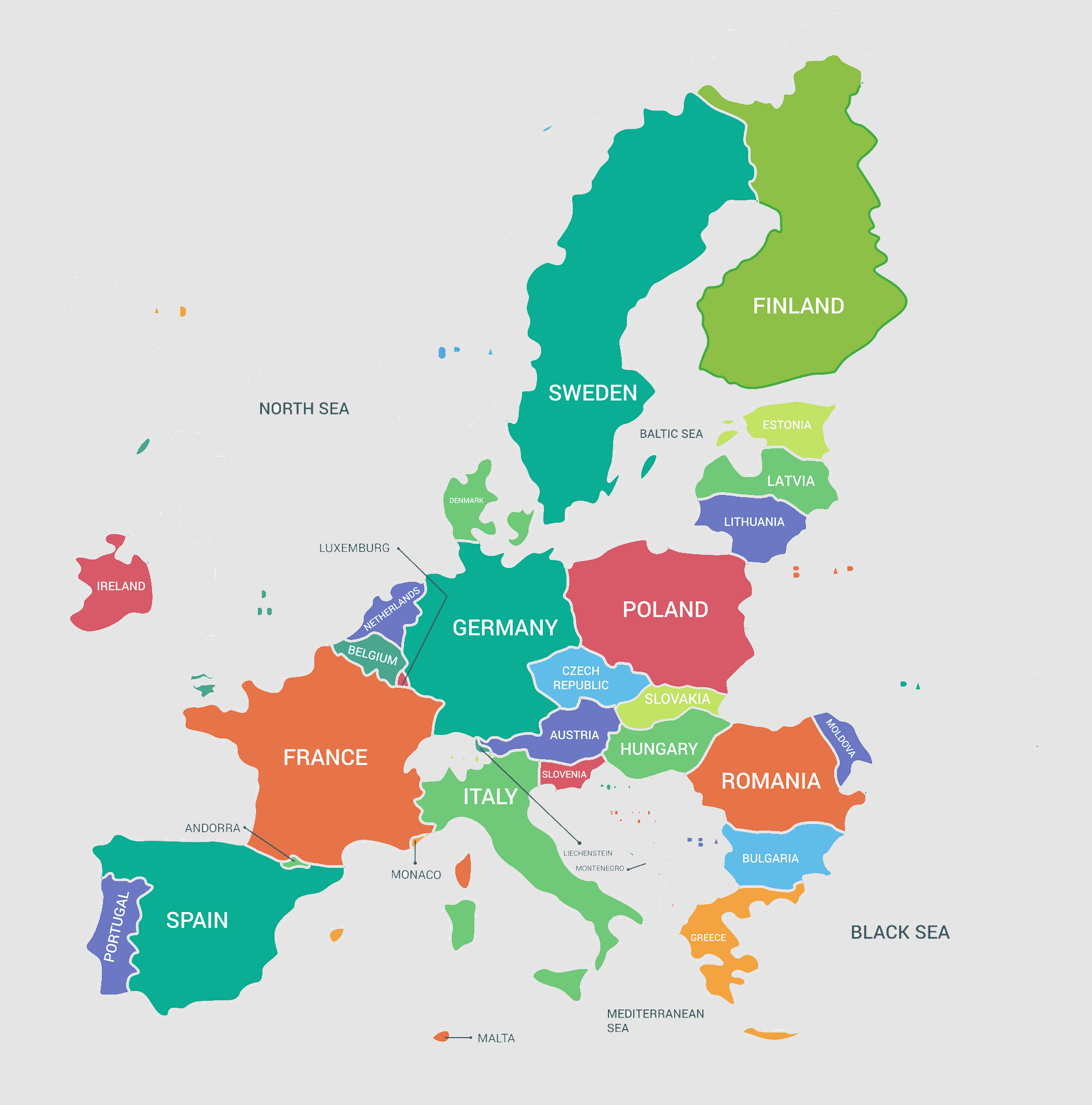Native Europeans
The European Union is made up of 27 member states, plus five other candidate countries belonging to the European continent of the Balkan area which have applied for membership of the Union and are anxiously awaiting their entry, plus another three located on the north-eastern borders of Europe who are now anxiously awaiting their entry for security reasons protected by the shield of the European Union and for economic reasons since they are not at all nostalgic for their economic system that capitulated a few decades ago.

For the configuration of the current European Union outlined by today's borders, we distinguish the territory whose borders are:
to the north with the coasts of Germany, the Netherlands, Denmark, Norway, Finland;
to the east with Poland, Romania, Bulgaria;
to the south with Greece, Malta, Italy, Spain;
to the west with France.
This territory has an estimated population of around 447 million net of the republics that are actually part of the European Union, which is higher than the population of the United States of America which is 334 million, but is also higher than the population of the Russian Federation around 146 millions. The populations of countries that are not yet full members of the European Union are excluded from this calculation, which does not mean denying their existence on the territory of the European Union but through an effective count of the size of the population on which the The European Union can today calculate and think about present and future geopolitical scenarios.
This population is linguistically composed of:
There are approximately 100 million German speakers, including all populations with a language belonging to or derived from the German language;
There are approximately 70 million Slavs who speak, including all populations with a language belonging to or derived from current Slavic;
There are approximately 200 million Latin speakers, including all the populations that today speak a language derived from Latin.
The remaining difference, less than 100 million, is made up of populations who speak ancient European languages, but which have nothing to do with those listed above. In fact, they belong to all intents and purposes to the European territory in the same way as the European majority languages listed above.
In terms of specific weight, if we take the linguistic factor as a reference with respect to the territory in continental terms, there is no doubt that the greatest weight belongs to the Slavic-speaking populations or those deriving from it.
Apparently, from the numbers indicated above, a homogeneity and uniformity of the population would emerge having as its lowest common denominator the languages derived from the Latin language and by specific weight on this majority count in the European Union.
This appears to be a superficial representation since this uniformity and specific weight are geopolitically localized in southern Europe, while as regards the central European and northern European territory this population is represented in very few percentages.
On the other hand, the German-speaking population or those deriving from it in Northern Europe are in the majority, which together with the Slavic-speaking population or deriving from it as the lowest common denominator, holds the greatest specific weight in Northern Europe. Considering the other Europhone populations other than those listed above, all located roughly in the north and north-east of Europe, a strong heterogeneity of the Northern European populations emerges in linguistic terms.
Based on the considerations listed above, tangible evidence emerges relating to the lack of official recognition of the lowest common denominator, which can only be the religious aspect. This aspect is in fact transversal to all of Europe and has its roots in both culture and tradition since 380 AD. up to the present day.
For the people of the European Union who are believers and practitioners, and for those who are of Christian culture but declare themselves atheists (ignoring that they can be atheists thanks to the fact that they are of Christian culture), the European Union has denied this recognition to the territory and to the peoples of the Union, effectively denying the lowest common denominator of that union. In doing so, a centuries-old history and a thousand-year-old tradition that has strongly characterized both the territory and the people is broken, and the indissoluble bond of belonging of people to their land and vice versa of the land to the native peoples. of that land is effectively destroyed.
Against this choice, there is a starting hypothesis which sees the desire to destroy and undermine the original European peoples and replace these peoples with a mass of homogeneous individuals, devoid of identity, devoid of history, devoid of tradition, devoid of belief ( religion) for a return to the atheism of ancient times, which translated means excellent slaves responding to the prompt command of any dictator or a group of them.